Biowalls: A Sustainable Solution for Air Quality and Urban Heat Reduction
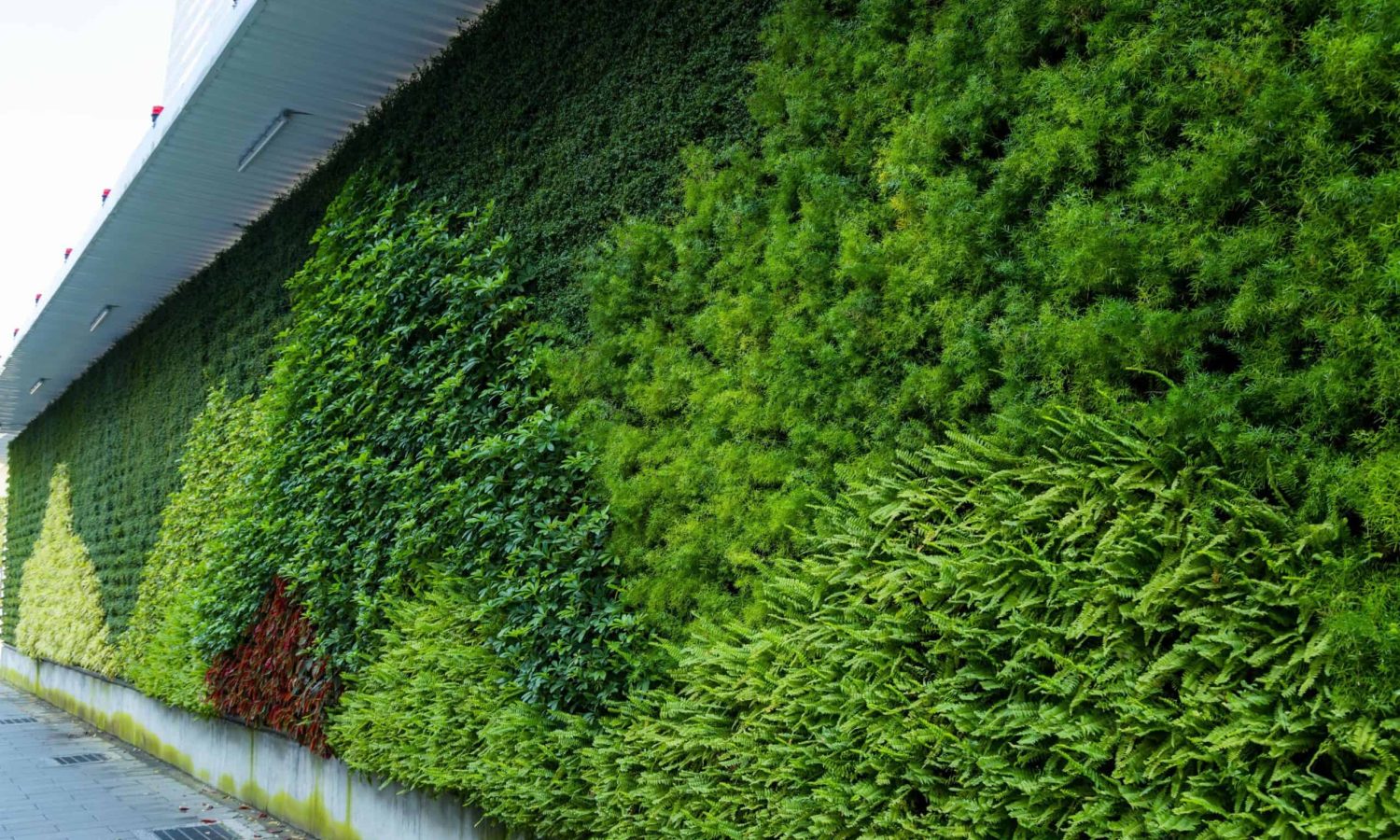
Biowalls — also referred to as living walls, vertical gardens, green facades, and green walls — are interior or exterior walls that are covered with living vegetation. Biowalls have practical applications for both indoor and outdoor use. Many indoor biowalls are implemented in homes and offices for their natural air-filtration properties and are used in tandem with traditional HVAC systems. Outdoor biowalls are most commonly found in urban environments, and serve to insulate buildings and combat the urban heat island (or UHI) effect, where exposed concrete surfaces reflect heat and cause urban centers to be excessively hot in the summertime. Biowalls are also effective for mitigating the UHI effect in urban centers located in warm and dry climates.
The Role of Vegetation in Improving Indoor Air Quality and Reducing VOCs
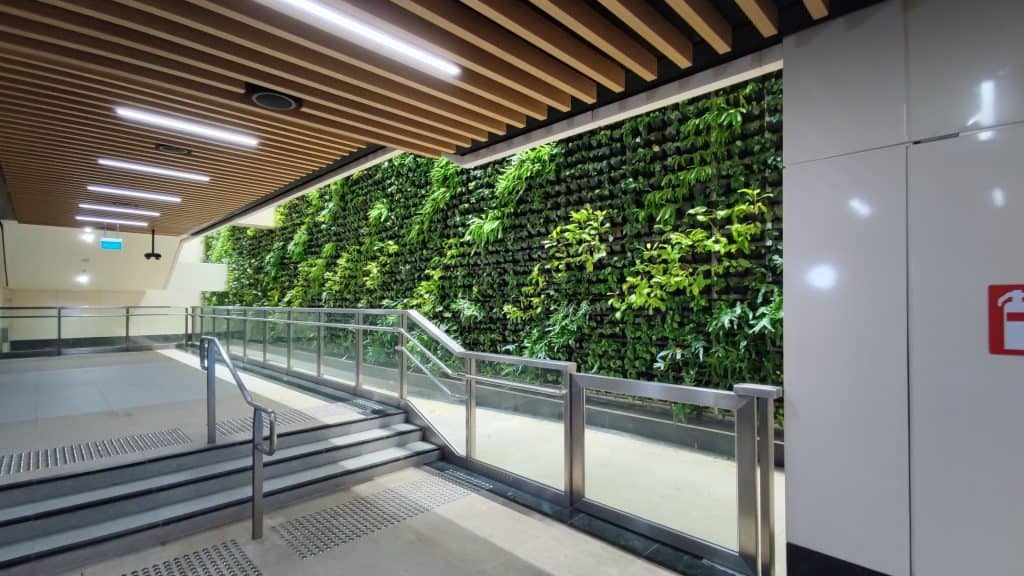
- The EPA has found that indoor air quality often rates worse than outdoor air, even in buildings with advanced HVAC systems, due to volatile organic compounds (VOCs). These VOCs emanate from various sources including paint, refrigerants, carpeting, adhesives, electronics, and petrochemical products. While individual VOC exposure may be harmless, prolonged exposure can lead to Sick Building Syndrome (SBS), characterized by headaches, dizziness, and irritation of eyes, nose and throat.
- NASA’s 1984 research demonstrated that plants effectively capture and clean VOCs from indoor environments.
- While plant leaves convert carbon dioxide to oxygen, the root systems are primarily responsible for capturing harmful VOCs.
Understanding Biowall Types, Functionality, and Biofiltration Systems
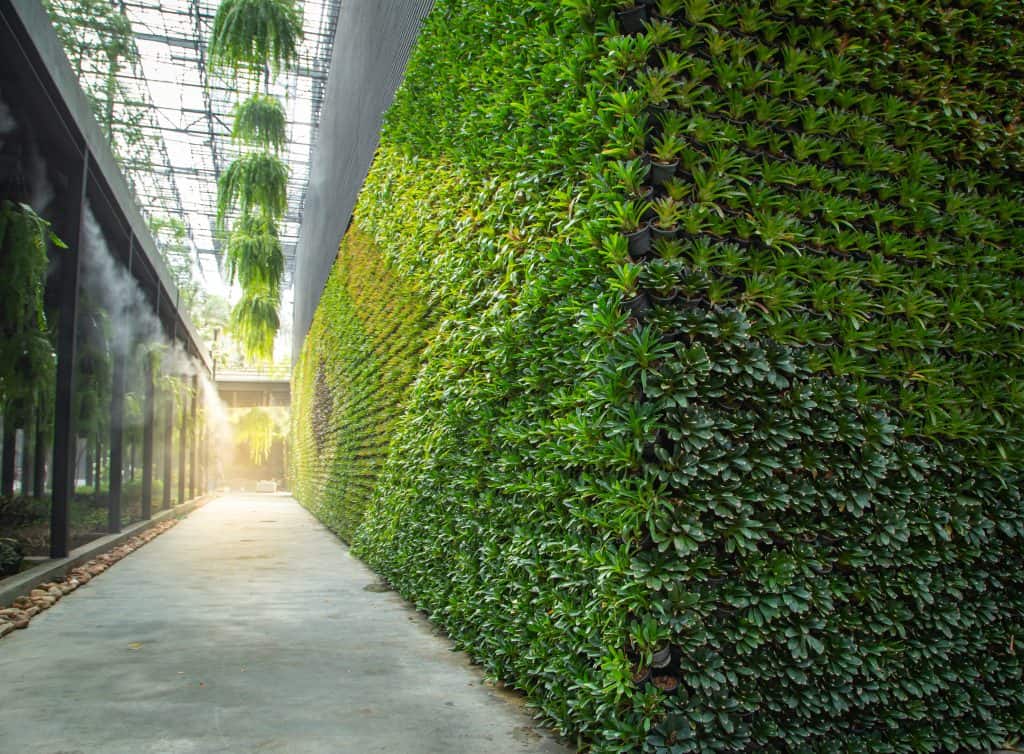
There are two main types of biowalls: panel systems, where soil in plastic bags serves as the growing medium, and felt systems, which use felt panels backed by a waterproof layer to support plant roots. A drip-irrigation system delivers water and nutrients, with excess water recirculated via a pump. Some systems use rainwater or recycled greywater to reduce water usage.
Biowalls are classified as either passive, where plants naturally filter air and release oxygen, or active, which enhance filtration by drawing air through the biowall with fans. Active systems trap VOCs in the plant roots, with the HVAC system distributing filtered air indoors.
The Pros and Cons of Biowalls: Balancing Benefits and Challenges
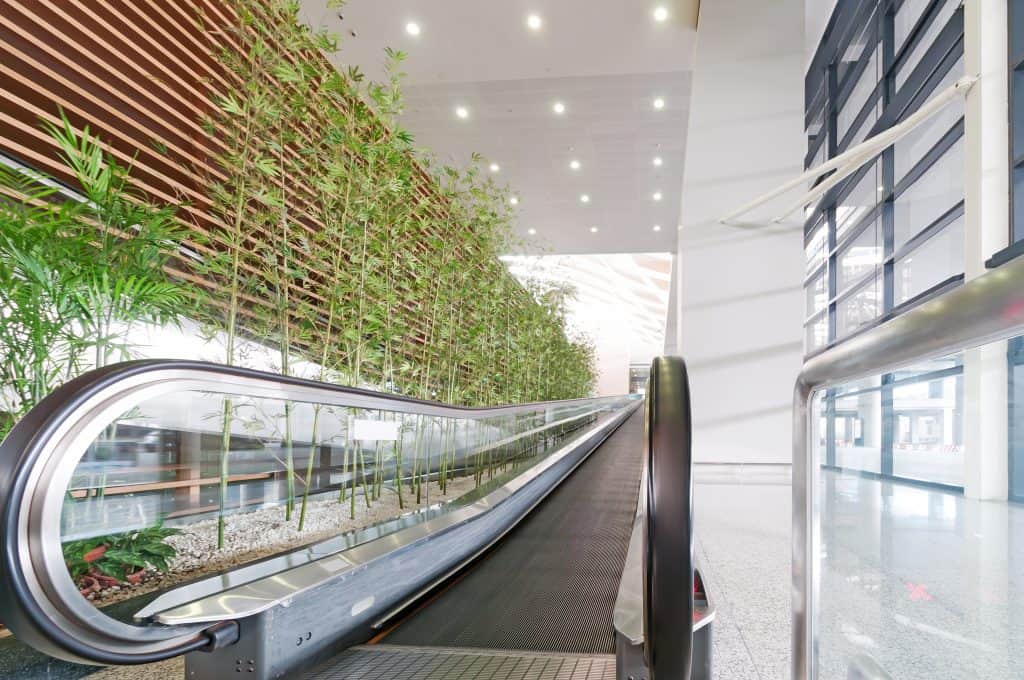
Advantages of Biowalls
Biowalls improve air quality, reduce energy costs, and mitigate urban heat island effects. They provide insulation, protect buildings from UV damage and acid rain, and can purify water. Biowalls also enhance aesthetics, boost productivity, offer soundproofing, and produce edible plants. They are less structurally demanding than green roofs and can retrofit existing walls.
Disadvantages of Biowalls
Biowalls require regular maintenance. Loose-soil systems can spill, and felt systems retain less water, needing frequent watering. They are costly to install and often cannot replace traditional air filtration due to code requirements.
Potential Hazards and Risks Associated with Biowalls
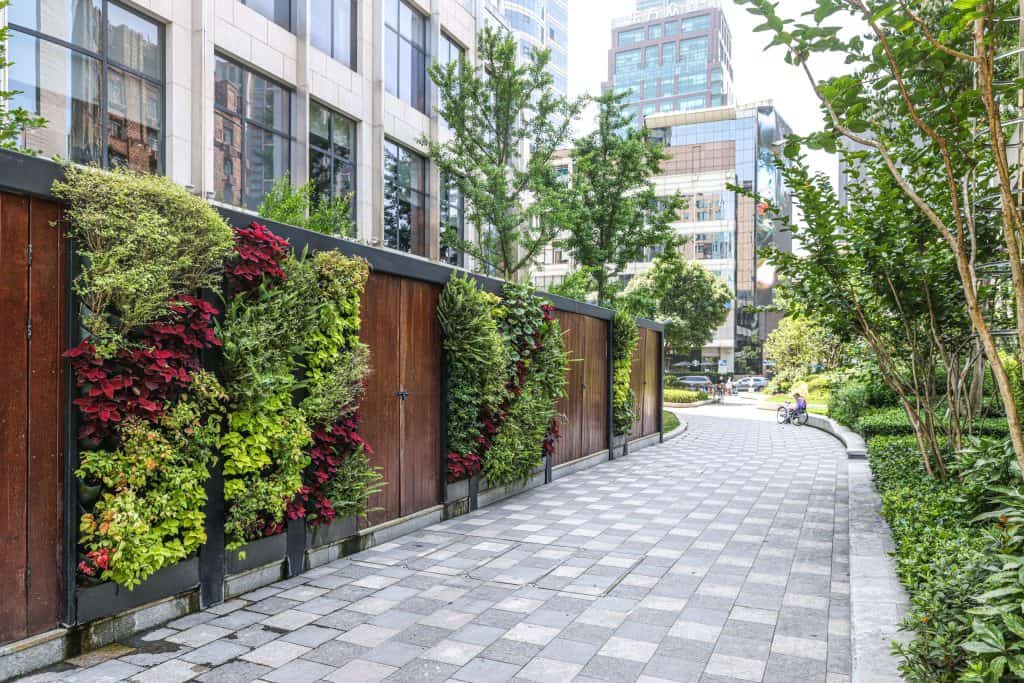
- Biowalls are ecosystems and, as such, may attract unwanted insects and pests.
- Roots penetrating into wall structures may be a hazard in systems that are not planned properly.
- Mold or damage to a biowall may be a problem in systems that do not drain properly.
- Greywater that is improperly handled poses a human health hazard.
Comprehensive Guidelines for Biowall Inspection and Maintenance
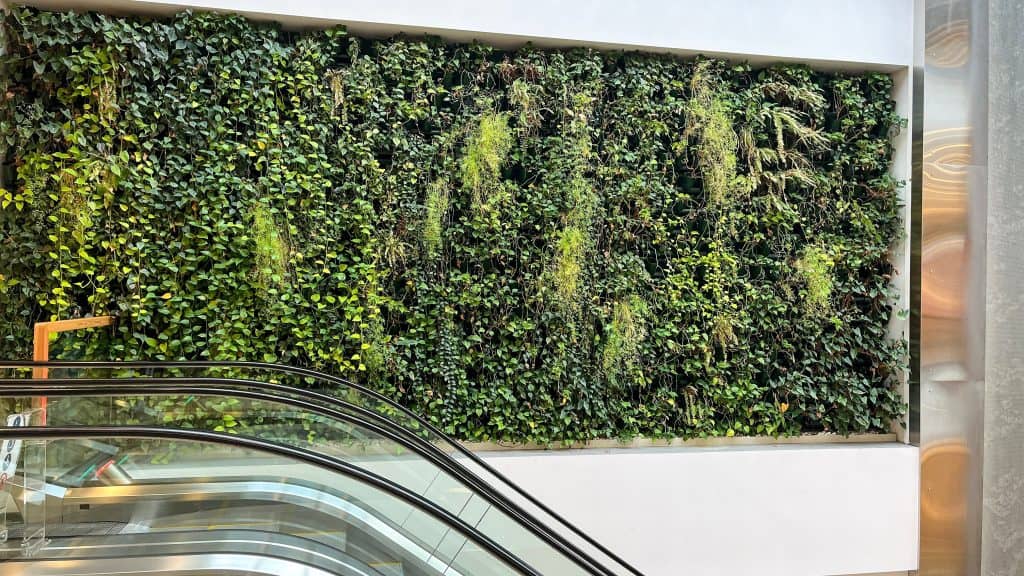
- Replace loose-growth media: every 2 years indoors, annually outdoors.
- Use artificial lighting for indoor systems without sunlight.
- Position outdoor systems for optimal sunlight exposure.
- Timer-based irrigation ensures efficient watering cycles.
- Ensure sufficient growth medium to prevent root compaction and plant die-off.
- Maintain 1 sq. ft. of biowall per 100 sq. ft. of floor space for adequate air filtration.
- Regularly drain systems to avoid mold and salt buildup.
- Provide proper airflow for active biowall efficiency.
- Choose plants suited to local conditions (outdoors) and low-pollen plants (indoors).
- Include backup water supply and overflow basin to handle emergencies.
- Use moisture-resistant wall structures for biowall installations.
Biowalls: Where Innovation and Nature Unite
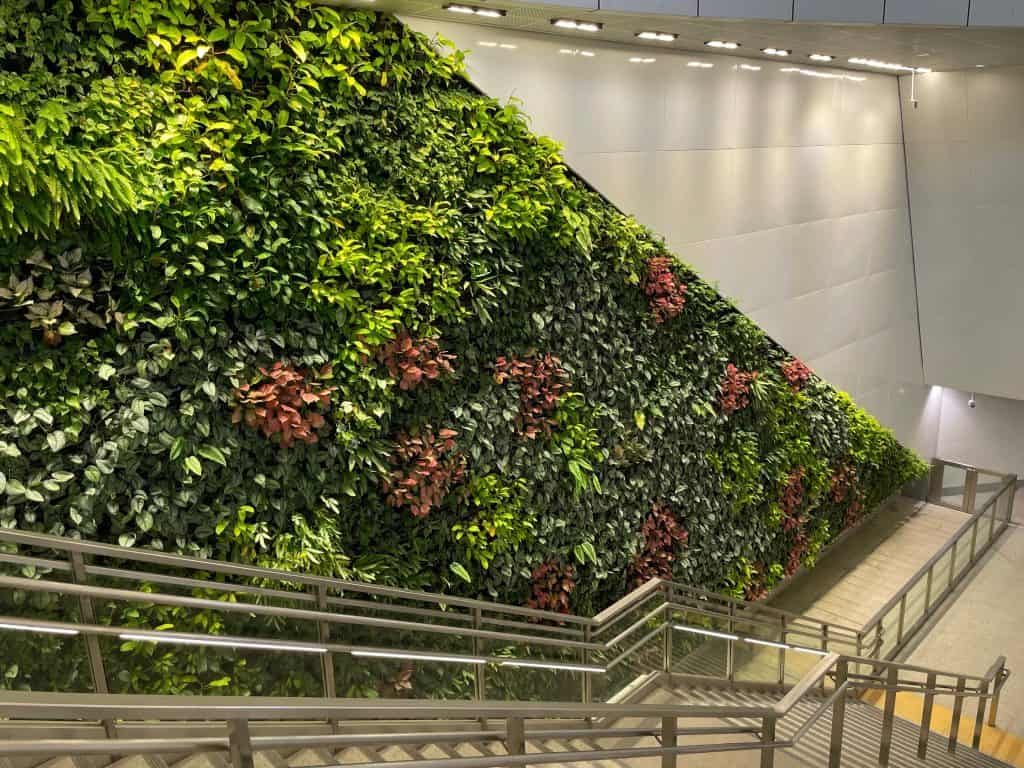
Discover the transformative impact of biowalls as you envision greener, healthier spaces. These living walls not only elevate design but actively improve air quality, conserve energy, and reduce urban heat. By blending nature with innovation, biowalls provide a sustainable, visually stunning solution that fosters well-being and enhances our connection to the environment. Let these vibrant installations inspire a future where nature thrives in every corner of modern life.

